|
|
|
The Continental Aesthetics reader
brings together key texts of thirty-five of the most important thinkers in the area of modern and contemporary aesthetics in one volume. Especially for this publication, Georg Lukács’ essay Specific Particularity as the Central Category of Aesthetics has been published in English for the first time. The critical writings are divided into six sections: “Nineteenth-Century German Aesthetics,” “Phenomenology and Hermeneutics,” “Marxism and Critical Theory,” “Modernism,” “Poststructuralism and Postmodernism,” and “Psychoanalysis and Feminism.” According to editor Clive Cazeaux, the “continental” aesthetic—as indicated in the title—compared with the “analytic” aesthetic, allows for more innovative and stimulating observations about art and the creative experience of modern and contemporary culture.
Clive Cazeaux, The Continental Aesthetics Reader, Routledge (11 New Fetter Lane, London), 2000, 618 pages, 17.5 x 25 cm.
|
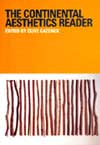
|
Morphing
The concept of the “Morphing System” was created in 1998 by Teresa Chen, Tristan Kobler, and Dorothea Wimmer, and has now taken form in the massive project of the Morphing collective. In 1999, an abandoned hospital in Zürich became a true experimental clinic—actually called KLINIK—that was host to innovative, experimental forms of expression carried out by a hundred or so Swiss artists, whose particular interest was the way that forms change and mutate. The artists developed and transformed each other’s works, so that the notion of a single author of any particular work no longer had any meaning. After an entire year KLINIK was dismantled and the only documentation of this singular artistic experience is this volume, which brings together a host of photographs, writings, and personal testimonies.
Morphing, Edition Patrick Frey (c/o Scalo, www.scalo.com), 2000, 218 pages, 21 x 27 cm.
|
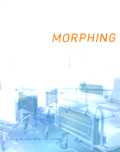
|
Raymond Pettibon
This is the latest monograph in the series “Contemporary Artists” published by the London based Phaidon Press. Raymond Pettibon’s artistic development is systematically documented, starting from his earliest works—like the CD covers for Black Flag and Sonic Youth—right up to his recent works. The American poet and writer Dennis Cooper interviews the artist in one section of the volume, while for another section Pettibon himself chose excerpts of texts from Modern Painters (1843-1860) by John Ruskin, The Life and Opinions of Tristram Shandy, Gentleman (1759-1767) by Laurence Sterne, and from The Arte of English Poesie (1589) by George Puttenham. The last part of the monograph includes poetry and never before published extracts by Pettibon on a range of topics from Jim Morrison to the allure of Hollywood.
Raymond Pettibon, Phaidon Press (Regent’s Wharf, All Saints, London), 2001, 160 pages, 26 x 29 cm.
|
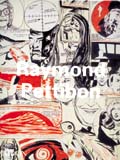
|
James Casebere. The Spatial Uncanny
An elegant catalogue dedicated to the work of the American artist who critics have called the “father of scenographic photography.” Created in collaboration with the Sean Kelly Gallery of New York, this volume is the first publication to completely cover the pioneering artistic journey of this artist, who photographs architectural models that the builds himself in the studio. Since the beginning of the ’70s, the main focus of his work has been the myths and common perceptions of the United States, seen as a place of houses, schools, cities, suburbs. Since 1992, he has also been addressing prisons, corridors, and underground passages, which, seen through Casebere’s aesthetic, have become icons of isolation and circulation. The three essays in this volume are of particular interest: Staging Lived Space: James Casebere’s Photographic Unconscious by Anthony Vidler, Grand Illusion by Chris Chang, and The Ancient Myths by Jeffrey Eugenides.
James Casebere. The Spatial Uncanny, Charta Press (Via della Moscova 27, www.chartaartbooks.it), 2001, 191 pages, 24.5 x 31 cm.
|
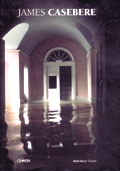
|
Gravità Zero. Arte, tecnologia e nuovi spazi dell’identità
This is the catalogue of the group show, entitled Zero Gravity. Art, technology, and new spaces of identity, curated by Bartolomeo Pietromarchi and Maria Grazia Tolomeo, that was held in the basement space, S8zero, of the Palazzo delle Esposizioni in Rome. The volume meticulously documents, in alphabetical order, the creations of the thirteen invited artists, each one accompanied by a text-interview. The basic theme of the show revolves around the idea that existence is becoming articulated through a new conception of identity, determined by the increasing invasiveness of technology within everyday life. Invited artists are: Mario Airò, Olaf Breuning, Bureau of Inverse Technology, Dafni & Papadatos, Dara Friedman, Henrik Håkansson, Christian Jankowski, Aernout Mik, Tanja Ostojic, Paul Pfeiffer, Ross Sinclair, Sabrina Torelli, and Jane & Louise Wilson.
Gravità Zero. Arte, tecnologia e nuovi spazi dell’identità, Palazzo delle Esposizioni, PdE Edizioni (Via Nazionale 194, Rome, www.palaexpo.com), 2001, 155 pages, 20 x 24 cm.
|
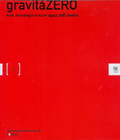
|
|
|
|